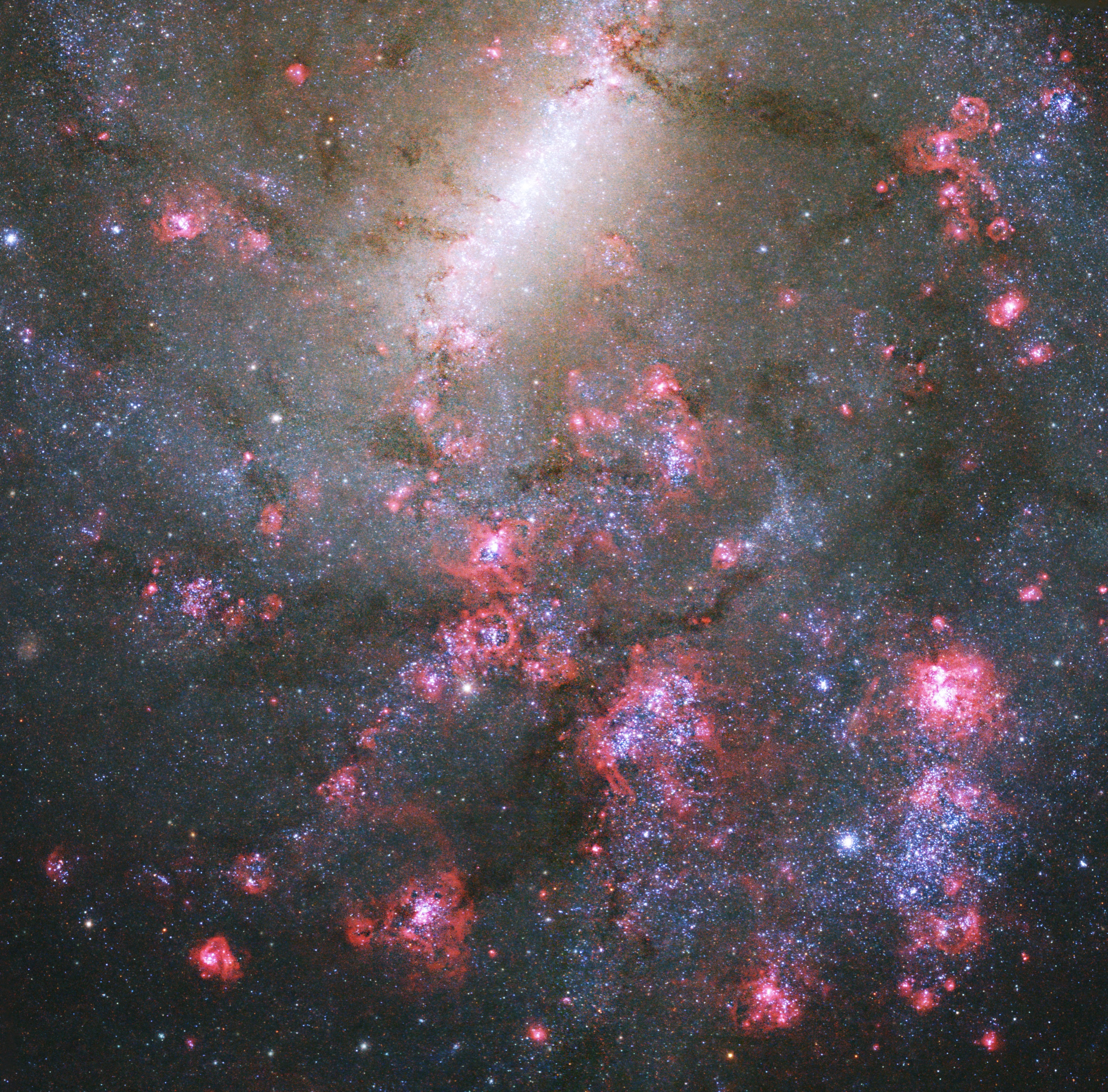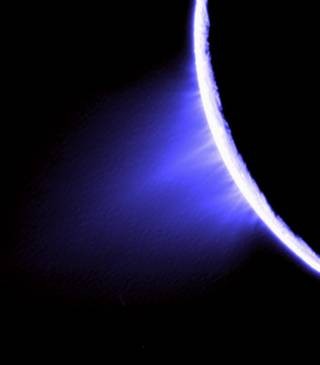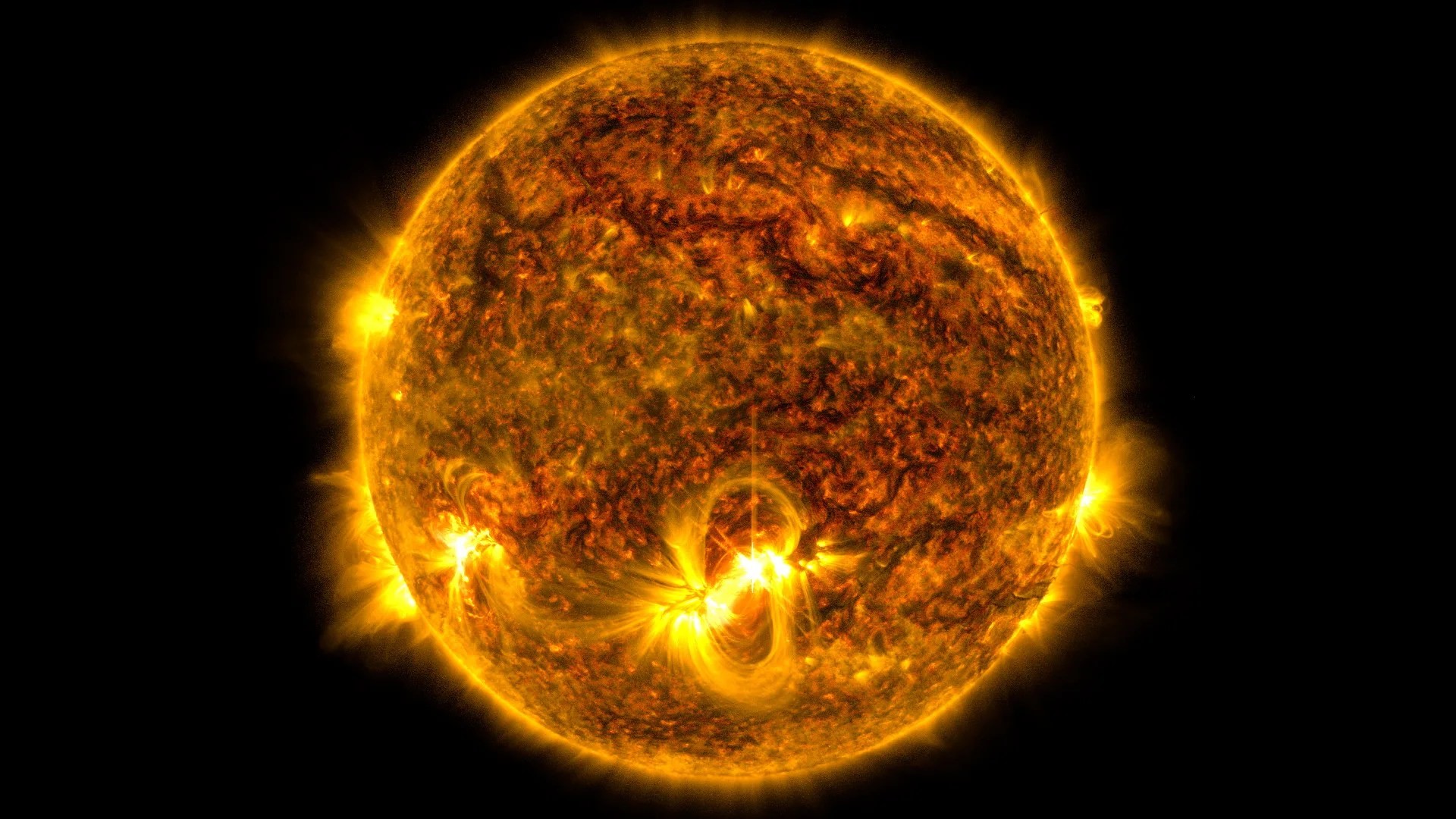A light-year is the distance light travels in one year, approximately 5.88 trillion miles, and understanding this concept is crucial for grasping the vastness of space, which indirectly enhances the appreciation for our own world. SIXT.VN offers seamless travel experiences in Vietnam, reminding us of the relative ease of exploring our planet compared to the cosmos. Let’s delve into this fascinating concept, its relevance, and how SIXT.VN can help you explore the wonders of Vietnam right here on Earth.
1. What Exactly Is a Light-Year?
A light-year is the distance light travels in one year, approximately 5.88 trillion miles (9.46 trillion kilometers). Light travels through space at an incredible speed of about 186,000 miles (300,000 kilometers) per second.
1.1 Why Use Light-Years?
Light-years are used to measure the immense distances in space. Using miles or kilometers would result in impractically large numbers. Imagine trying to describe the distance to another galaxy in miles – it would be mind-boggling.
1.2 The Speed of Light: A Cosmic Constant
Light travels incredibly fast. In just one minute, light covers about 11,160,000 miles. It takes sunlight approximately 43.2 minutes to reach Jupiter, which is about 484 million miles away from Earth. According to NASA, the speed of light is the ultimate speed limit in the universe.
1.3 Light-Time: Measuring Cosmic Distances
Light-time is the distance light travels in a specific period. Earth is about eight light-minutes from the Sun. Traveling at the speed of light to the farthest reaches of our solar system, the Oort Cloud, would take about 1.87 years.
2. How Big Is a Light-Year Compared to Everyday Distances?
Understanding the sheer scale of a light-year requires a comparison to distances we experience in our daily lives. A light-year is vastly larger than any distance on Earth, making interstellar travel a significant challenge.
2.1 Earth vs. the Solar System
Earth is just a tiny speck in the vastness of our solar system. The distance from the Earth to the Sun is only about 8 light-minutes.
2.2 Our Solar System vs. the Milky Way
Our solar system is a small part of the Milky Way galaxy, which is about 100,000 light-years across. According to research from the European Space Agency (ESA) in 2022, the Milky Way contains between 100 to 400 billion stars, making our solar system just one of countless others.
2.3 The Milky Way vs. Other Galaxies
The Milky Way is just one of about 2 trillion galaxies in the observable universe, according to NASA. Our neighboring Andromeda galaxy is about 220,000 light-years wide, and other galaxies like IC 1101 span as much as 4 million light-years.
3. How Far Is It to the Nearest Star?
Proxima Centauri, the nearest star to our solar system, is approximately 4.25 light-years away. This seemingly short distance is still a colossal 24 trillion miles.
3.1 Proxima Centauri: Our Neighbor
At a distance of 4.25 light-years, traveling to Proxima Centauri by jet would take about 5 million years. It’s a small, rocky planet that orbits Proxima Centauri.
3.2 The Challenge of Interstellar Travel
Even the closest star systems are incredibly far away, making interstellar travel a daunting prospect with current technology. The distances are so vast that even traveling at the speed of light would take several years.
4. What Are Some Interesting Objects Measured in Light-Years?
Many fascinating celestial objects are measured in light-years, including exoplanets, galaxies, and nebulae. Each offers a glimpse into the scale and diversity of the universe.
4.1 Exoplanets: Worlds Beyond Our Solar System
Exoplanets are planets orbiting stars other than our Sun. According to NASA’s Kepler Space Telescope observations, virtually every star likely hosts at least one planet. The nearest-known exoplanet is a small, rocky planet orbiting Proxima Centauri, about 4.25 light-years away.
4.2 The TRAPPIST-1 System
The TRAPPIST-1 system is an intriguing system of seven planets, all roughly Earth-sized, orbiting a red dwarf star about 40 light-years away. According to NASA, four of these planets are in the habitable zone, allowing potential liquid water on their surfaces.
4.3 Distant Exoplanets
One of the most distant exoplanets known is Kepler-443 b, which is 3,000 light-years away. Traveling to this exoplanet at light speed would take 3,000 years.
5. How Does Understanding Light-Years Impact Our Perspective?
Grasping the scale of light-years transforms our understanding of our place in the universe and highlights the uniqueness of our planet.
5.1 The Immensity of the Cosmos
Light-years help us appreciate the sheer size of the cosmos. The universe contains trillions of galaxies, each with billions of stars and planets.
5.2 The Rarity of Habitable Planets
Understanding the distances between stars and the conditions required for life emphasizes how rare habitable planets might be. According to the University of California, Berkeley, in 2021, factors like a planet’s distance from its star, atmosphere, and composition all play crucial roles in determining habitability.
5.3 A Renewed Appreciation for Earth
The vastness of space and the challenges of interstellar travel give us a greater appreciation for our home planet. According to the United Nations Environment Programme (UNEP) in 2023, protecting Earth’s environment is crucial for ensuring our continued survival and prosperity.
6. What Are the Implications of Light-Year Distances for Space Travel?
The enormous distances measured in light-years present significant challenges for space travel, requiring advanced technologies and long-duration missions.
6.1 The Challenge of Speed
Even traveling at the speed of light, reaching distant stars would take many years, far beyond the lifespan of humans. Developing technologies that could approach the speed of light is a major hurdle.
6.2 Time Dilation and Space Travel
Einstein’s theory of relativity suggests that time dilation would occur at speeds approaching the speed of light. The Massachusetts Institute of Technology (MIT) published a study in 2020 explaining how this could affect space travelers.
6.3 Alternative Propulsion Methods
Researchers are exploring alternative propulsion methods such as warp drives and wormholes to overcome the limitations of light speed. According to research from the California Institute of Technology (Caltech) in 2022, these concepts are still theoretical and require significant technological breakthroughs.
7. Where Can You Experience a Sense of the Cosmos in Vietnam?
While interstellar travel remains a distant dream, Vietnam offers unique experiences that can inspire a sense of wonder about the cosmos and our place in it.
7.1 Stargazing Locations in Vietnam
Several locations in Vietnam offer excellent stargazing opportunities, away from city lights and pollution.
7.1.1 Da Lat
Da Lat, located in the highlands of Vietnam, offers clear skies and cooler temperatures, making it an ideal location for stargazing. The area’s elevated position and distance from major cities provide a darker sky, enhancing the visibility of stars and celestial objects. Visitors can find secluded spots on the outskirts of the city or in the surrounding hills to enjoy a peaceful night under the stars.
Why Da Lat is Great for Stargazing:
- High altitude: Reduced atmospheric interference.
- Away from major cities: Less light pollution.
- Cooler temperatures: Comfortable viewing conditions.
Tips for Stargazing in Da Lat:
- Check the weather forecast: Ensure clear skies.
- Bring warm clothing: Temperatures can drop at night.
- Use a stargazing app: Help identify stars and constellations.
7.1.2 Cat Ba Island
Cat Ba Island, part of Ha Long Bay, offers stunning natural landscapes and dark skies for stargazing. Away from the bustling tourist areas, you can find quiet beaches and viewpoints where the stars shine brightly. The island’s remote location and minimal light pollution make it a great spot to observe the night sky.
Why Cat Ba Island is Great for Stargazing:
- Remote location: Minimal light pollution.
- Beautiful natural landscapes: Scenic backdrop for stargazing.
- Quiet beaches and viewpoints: Peaceful and secluded spots.
Tips for Stargazing on Cat Ba Island:
- Stay overnight: Enjoy the stars away from daytime crowds.
- Bring insect repellent: Mosquitoes can be active at night.
- Check tide times: Ensure safe access to beaches.
7.1.3 Cuc Phuong National Park
Cuc Phuong National Park, one of Vietnam’s largest national parks, provides an excellent environment for stargazing. The park’s dense forests and remote location offer dark skies, perfect for observing stars and constellations. Visitors can camp overnight or stay in the park’s accommodations to experience the night sky away from city lights.
Why Cuc Phuong National Park is Great for Stargazing:
- Dense forests: Natural barrier against light pollution.
- Remote location: Dark skies for optimal viewing.
- Overnight accommodations: Stay comfortably within the park.
Tips for Stargazing in Cuc Phuong National Park:
- Obtain necessary permits: Ensure access to the park at night.
- Bring a flashlight: Navigate through the forest safely.
- Listen for nocturnal wildlife: Enhance the nature experience.
7.1.4 Mui Ne
Mui Ne, a coastal town known for its sand dunes, offers unique stargazing opportunities. The open desert-like environment provides unobstructed views of the night sky. The minimal light pollution and clear skies make Mui Ne a distinctive location for observing stars and planets.
Why Mui Ne is Great for Stargazing:
- Open sand dunes: Unobstructed views of the sky.
- Minimal light pollution: Dark skies for clear visibility.
- Unique desert-like environment: Distinctive stargazing experience.
Tips for Stargazing in Mui Ne:
- Visit during the dry season: Ensure clear skies.
- Bring a blanket or mat: Sit comfortably on the sand.
- Check for meteor showers: Enhance your viewing experience.
7.1.5 Sapa
Sapa, located in the mountainous region of northern Vietnam, offers breathtaking views and dark skies for stargazing. The high altitude and remote location provide an excellent environment for observing the stars and constellations. Visitors can find secluded spots in the surrounding hills and rice terraces to enjoy a peaceful night under the stars.
Why Sapa is Great for Stargazing:
- High altitude: Reduced atmospheric interference.
- Remote location: Minimal light pollution.
- Stunning mountain views: Scenic backdrop for stargazing.
Tips for Stargazing in Sapa:
- Visit during the dry season: Ensure clear skies.
- Bring warm clothing: Temperatures can drop at night.
- Hire a local guide: Find the best stargazing spots.
7.2 Planetariums and Observatories
Visit planetariums or observatories in Vietnam to learn more about astronomy and observe celestial objects through telescopes.
7.3 Cultural Experiences
Explore Vietnamese culture and traditions, which often incorporate celestial themes and stories.
8. How SIXT.VN Can Help You Explore Vietnam
While light-years may seem distant, SIXT.VN brings the wonders of Vietnam within easy reach. SIXT.VN helps you discover the beauty of Earth while contemplating the vastness of space.
8.1 Convenient Airport Transfers
Start your journey with ease by booking a reliable airport transfer with SIXT.VN. According to the Vietnam National Administration of Tourism (VNAT), smooth transportation is crucial for a positive travel experience.
Address: 260 Cau Giay, Hanoi, Vietnam
Hotline/Whatsapp: +84 986 244 358
8.2 Wide Range of Hotel Options
Find the perfect accommodation to suit your needs and budget. SIXT.VN offers a variety of hotels in prime locations throughout Vietnam.
8.3 Exciting Tours and Activities
Explore the diverse landscapes and cultural attractions of Vietnam with guided tours and activities arranged by SIXT.VN. From Ha Long Bay to the Mekong Delta, there’s something for everyone.
8.4 Easy Flight Booking
Book your flights to Vietnam with ease through SIXT.VN, ensuring a seamless travel experience from start to finish.
9. Understanding Light-Years: SEO Perspective for Travel Enthusiasts
For travel enthusiasts, understanding light-years might seem unrelated to planning a vacation. However, integrating this concept into travel-related content can attract a broader audience and enhance SEO.
9.1 Broadening Content Appeal
By incorporating topics like astronomy and space into travel content, you can attract readers interested in science and exploration, thus broadening the appeal of your website.
9.2 Using Relevant Keywords
Keywords related to light-years, space travel, and astronomy can be strategically used in blog posts, articles, and website content to improve search engine rankings.
9.3 Educational Content
Creating educational content about light-years and their relevance to our understanding of the universe can position your website as a knowledgeable and authoritative source.
9.4 Visual Content
Including images and videos of celestial objects, galaxies, and space-related themes can enhance the visual appeal of your website and engage visitors for longer periods.
9.5 Social Media Engagement
Sharing intriguing facts about light-years and space on social media platforms can drive traffic to your website and increase brand awareness.
10. Call to Action: Embark on Your Vietnamese Adventure with SIXT.VN
Ready to explore the wonders of Vietnam? Let SIXT.VN take care of your travel needs, from airport transfers to hotel bookings and exciting tours. Contact us today to start planning your unforgettable journey.
Address: 260 Cau Giay, Hanoi, Vietnam
Hotline/Whatsapp: +84 986 244 358
Website: SIXT.VN
 Milky Way From Cuc Phuong National Park
Milky Way From Cuc Phuong National Park
Caption: A mesmerizing view of the Milky Way from the dark skies of Cuc Phuong National Park, Vietnam, showcasing the beauty of our galaxy.
FAQ: Light-Years and Travel in Vietnam
1. What is a light-year in simple terms?
A light-year is the distance light travels in one year, approximately 5.88 trillion miles. It’s a unit used to measure vast distances in space.
2. Why are light-years used instead of miles or kilometers?
Light-years are used because distances in space are so vast that using miles or kilometers would result in unmanageably large numbers.
3. How does the speed of light relate to a light-year?
The speed of light, which is about 186,000 miles per second, is the basis for measuring a light-year. A light-year is the distance light travels at this speed in one year.
4. What is the closest star to our solar system in light-years?
The closest star to our solar system is Proxima Centauri, which is approximately 4.25 light-years away.
5. Can humans travel to stars that are light-years away?
With current technology, traveling to stars that are light-years away is not feasible due to the immense distances and limitations of our propulsion systems.
6. How does understanding light-years affect our perspective on space travel?
Understanding light-years highlights the challenges of space travel and the vastness of the universe, making interstellar travel a distant prospect with current technology.
7. Are there any places in Vietnam where I can experience a sense of the cosmos?
Yes, locations such as Da Lat, Cat Ba Island, Cuc Phuong National Park, Mui Ne, and Sapa offer excellent stargazing opportunities away from city lights and pollution.
8. How can SIXT.VN help me plan my trip to Vietnam for stargazing?
SIXT.VN offers convenient airport transfers, a wide range of hotel options, and exciting tours to help you explore Vietnam’s best stargazing locations.
9. What cultural experiences in Vietnam relate to celestial themes?
Vietnamese culture and traditions often incorporate celestial themes and stories, providing a unique perspective on the cosmos.
10. How can I book services with SIXT.VN for my Vietnam trip?
You can book services with SIXT.VN by visiting our website or contacting us via phone or WhatsApp.
 Exoplanet Kepler 443b
Exoplanet Kepler 443b
Caption: An artist’s depiction of exoplanet Kepler-443b, located 3,000 light-years away, showcasing the immense distances of far-off worlds.
By understanding the concept of a light-year and its implications, travelers can gain a deeper appreciation for the world around us and the universe beyond. SIXT.VN is here to help you explore the wonders of Vietnam, offering convenient and reliable services to make your journey unforgettable.
Enhance Your Vietnam Experience with SIXT.VN
- Effortless Airport Transfers: Begin your trip stress-free with our punctual and comfortable airport transfer services.
- Curated Hotel Selection: Choose from a variety of hotels that suit your style and budget, ensuring a pleasant stay.
- Adventurous Tour Packages: Discover the hidden gems of Vietnam with our expertly designed tour packages, offering unique experiences.
- Seamless Flight Bookings: Let us handle your flight arrangements, providing you with the best options and prices.
The SIXT.VN Advantage
- Reliability: We pride ourselves on providing dependable services that you can trust.
- Convenience: Our easy-to-use platform makes booking and managing your travel arrangements simple and straightforward.
- Personalization: We tailor our services to meet your specific needs, ensuring a customized travel experience.
- Expert Support: Our dedicated team is available to assist you with any questions or concerns, providing you with peace of mind.
Connect with Us
- Address: 260 Cau Giay, Hanoi, Vietnam
- Hotline/Whatsapp: +84 986 244 358
- Website: SIXT.VN
 Binary Black Hole System
Binary Black Hole System
Caption: An artist’s rendering of a binary black hole system, illustrating celestial phenomena and the vast distances studied by astronomers.
Embark on a journey of discovery with SIXT.VN and experience the beauty and wonder of Vietnam. Whether you’re interested in exploring bustling cities, serene landscapes, or simply relaxing on pristine beaches, we have everything you need to create unforgettable memories. Contact us today and let us help you plan your perfect Vietnam adventure!
 Solar Flare
Solar Flare
Caption: A powerful solar flare captured by NASA, reminding us of the dynamic forces at play in our solar system and the vastness of space.



